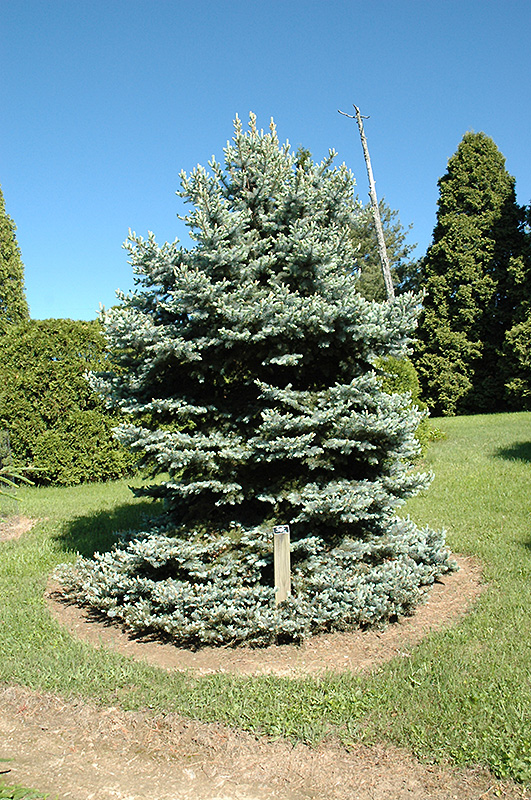>> Home
Royal Knight Blue Spruce
Picea pungens 'Royal Knight'
Height: 50 feet
Spread: 20 feet
Sunlight:
![]()
Hardiness Zone: 2b
Other Names: Blue Colorado Spruce;Colorado Blue Spruce
Description:
A phenomenally attractive spruce tree for the landscape because of its almost sky-silver-blue needles and stiffly horizontal branching habit, holds its color well throughout the year; attributes combine to make for a wonderful character tree
Ornamental Features
Royal Knight Blue Spruce is primarily valued in the landscape for its distinctively pyramidal habit of growth. It has attractive silver evergreen foliage. The needles are highly ornamental and remain silver throughout the winter. The rough gray bark adds an interesting dimension to the landscape.
Landscape Attributes
Royal Knight Blue Spruce is a dense evergreen tree with a strong central leader and a distinctive and refined pyramidal form. Its average texture blends into the landscape, but can be balanced by one or two finer or coarser trees or shrubs for an effective composition.
This is a relatively low maintenance tree. When pruning is necessary, it is recommended to only trim back the new growth of the current season, other than to remove any dieback. Deer don't particularly care for this plant and will usually leave it alone in favor of tastier treats. It has no significant negative characteristics.
Royal Knight Blue Spruce is recommended for the following landscape applications;
- Accent
- Vertical Accent
- Windbreaks and Shelterbelts
Planting & Growing
Royal Knight Blue Spruce will grow to be about 50 feet tall at maturity, with a spread of 20 feet. It has a low canopy, and should not be planted underneath power lines. It grows at a slow rate, and under ideal conditions can be expected to live for 80 years or more.
This tree should only be grown in full sunlight. It is very adaptable to both dry and moist growing conditions, but will not tolerate any standing water. It is considered to be drought-tolerant, and thus makes an ideal choice for xeriscaping or the moisture-conserving landscape. It is not particular as to soil type or pH, and is able to handle environmental salt. It is highly tolerant of urban pollution and will even thrive in inner city environments. This is a selection of a native North American species.
